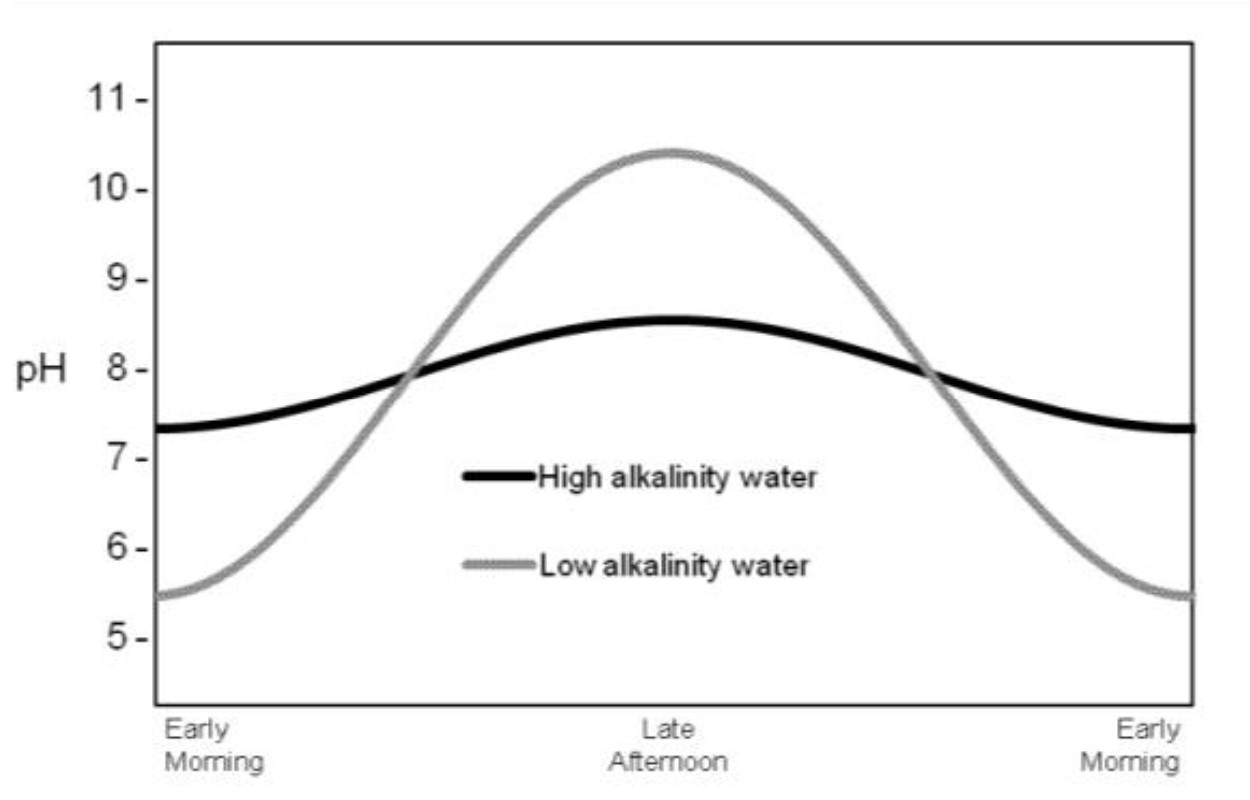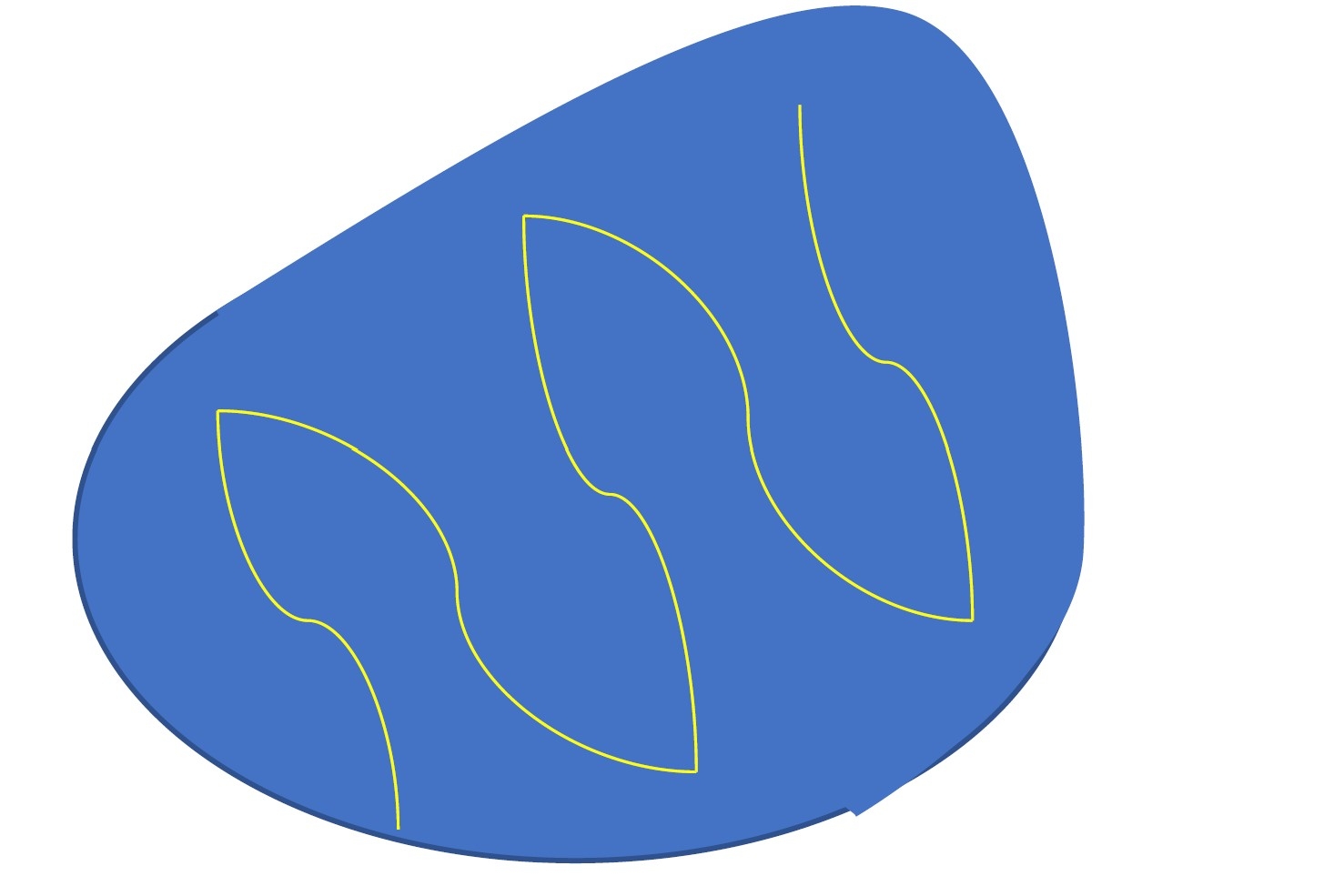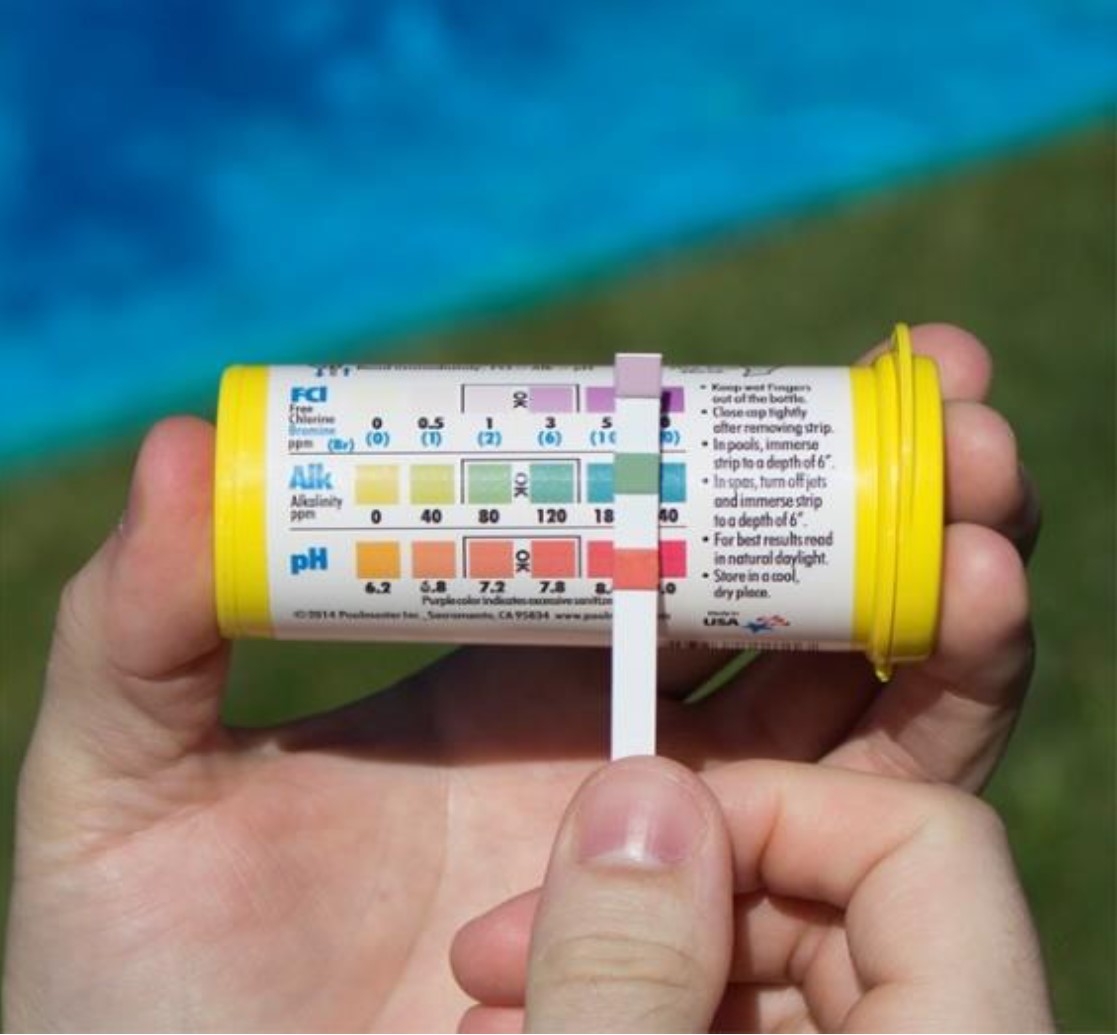Liming Farm and Recreational Ponds
ID
CNRE-126NP
Introduction
In Virginia, there are more than 80,000 farm ponds. These ponds have multiple functions for their owners: irrigation, flood control, recreational fisheries, livestock watering, aquaculture and wildlife habitat. For many of these uses, water quality and pond productivity can be improved by adding agricultural lime (aglime). Pond productivity is the utilization of sunlight to stimulate the plant ecology for sustainable pond life.
Waters in Virginia lack the alkalinity (ionic concentration of CO3= and HCO3-) and hardness levels (ionic concentration of Ca++) necessary to have a productive ecology for plants and fish. By adding agricultural lime (aglime), calcium carbonate will accomplish this task and improve water quality.
By liming a pond, it corrects the condition of low mineral content that is stressful for fish and increase nutrient availability. It also prevents extreme diel (24 hours) swings of pH that can result in killing fish fry, thusly affecting reproduction, which are some of the keys to appropriate pond balance.
Water quality of most ponds is influenced by the muds (soil) at the bottom of the pond. The mud (soil) chemistry dictates the water chemistry of the pond. If the muds (soil) are high in calcium carbonate level due to limestone deposits, the pond should have adequate levels of carbonates (alkalinity) and calcium (hardness).
Many farm ponds don’t have limestone deposits or waters flowing over limestone that feed the pond. This results in many ponds having low alkalinity and calcium levels that make a pond unproductive and its fish population out of balance.
Hardness - Calcium
Hardness consists of divalent metallic cations, calcium (Ca++) and magnesium (Mg++). Calcium hardness is important for plant growth. Fish need it for bone growth and reproduction. If a pond lacks adequate levels of calcium, it will result in poor fish population and ecology. Under these circumstances, unusual and strange aquatic weeds may take over the pond. Typically, a pond should have at least 20 ppm of calcium (hardness) in the water. Having calcium greater than 20 ppm is acceptable and won’t cause any issues. Hardness should range from 20 to 300 ppm for ponds.
Alkalinity and pH
Alkalinity is a crucial water quality parameter that improves overall pond productivity. The minimal level of alkalinity of a pond is 20 ppm. But now it is suggested that it should be higher. The new minimum is at least 50 ppm. The usual range for alkalinity is 50 to 300 ppm. Again, the addition of aglime will improve the alkalinity and moderate pH change in a farm pond and increase the calcium hardness.
Alkalinity is the buffering capacity of the pond. By having bicarbonates and carbonates in the pond, it moderates the swings and changes of pH. This is what keeps the pH of the pond between 6.5 and 9.0. Pond pH levels below 4 or above 11 are lethal for fish.
Alkalinity is measured by the amount of acid that can be titrated into a sample having an indicator that shows when the endpoint is reached. The more acid that is titrated into solution, the higher the alkalinity and the buffering capacity for pH change for that body of water. Alkalinity moderates the pH swings for the pond. The pH has a 24-hour cycle. The pH of a pond is at its lowest just at sunrise, and its highest in the late afternoon. Usually, the best time of day to measure the pH in a pond is early in the morning when it is at the lowest point. However, you can take it anytime if needed.
The pH swing is large (low to high) in waters of low alkalinity, with less than 20 ppm. In waters with high alkalinity, pH swings are much smaller. (See Fig. 1).

Typically, most pH in farm ponds is 6.5 to 9.0. Based on Virginia Cooperative Extension (VCE) testing of farm ponds in Virginia, they have a narrow range from a pH of 6.5 to 7.5. VCE has conducted many pond management workshops over the past 25 years. At these workshops, pond owners submitted water samples for testing. Many of these ponds had a pH of 6.5 to 7.0 with alkalinity and hardness less than 17 ppm. The pond water samples were tested using the HACH® FF-1A Fish Farmer Test Kit for all pond water samples submitted. All of these ponds needed agriculture lime to improve the alkalinity and hardness levels.
Lime requirement for ponds: How much lime is needed for a pond?
To get a precise lime requirement for a pond, the muds (soil) must be analyzed by a soil testing lab. Many universities across the country have soil labs.
To make it simple for the soil lab, the pond mud sample should be tested for the lime requirement for Alfalfa. The lime requirement for Alfalfa will satisfy the alkalinity and hardness of the pond. Before sending the sample, check with the soil testing lab about their capabilities for testing mud (soil) samples from ponds for a lime requirement.
Another way to determine the lime requirement is knowing the soil type for your area. This will tell you how much lime is needed. A soil map of the state or county will determine how much lime is required.
Collecting samples for lime requirement
If you are doing a lime requirement for a crop that is being planted, would you get just one sample from one location of the field? NO! You would get multiple samples from the field to determine the lime requirements. You would do the same for a pond. You need to get 10 to 20 mud samples depending on the size of the pond. Some say more is better, and others say six or so samples are sufficient for doing a lime requirement. The sampling should be done in a S-configuration that covers the whole pond.
Once collected, the mud samples should be mixed together and spread onto newspaper or cardboard and left to sundry. This is a very important step before packing the sample into the soil testing container.
Absolutely do not send the samples of the mud without drying it first before packing the sample into the soil testing container. If placed into the container wet, the mud will dry as one hard brick that will be unacceptable to the soil testing lab.
After the mixed muds have dried, break it up for the soil sample container and label it soil requirement for Alfalfa. The requirement should come back as tons/acre (ton = 2000 pounds).
Lime Requirement Results
The lime requirement for your pond will be in tons/acre. Once you get the results, what kind do you want to apply to your pond? There are several types of lime available, so be careful in choosing one. What you want to get is agricultural lime, calcium carbonate, CaCO3. This is the best lime material for ponds. Other materials have been used for ponds such as CaOH, shake lime. Do not use the CaOH in ponds with fish. When used in ponds with fish, it increases the pH level in a pond that kills fish. The lethal pH points that kill fish are pH 4 and pH 11. Any time the pH of a pond reaches 5 or 10, this creates physiological stress on the fish and affects reproduction. Pond owners that did use CaOH resulted in a fish kill and a sterile pond for months.
How to Distribute Lime for a Pond?

For the lime to be effective in changing the pond water quality, it must be distributed entirely and evenly over the entire pond surface. The best time to add aglime is in the fall. This allows for the lime to settle to the bottoms onto the muds (soil). For best results, the use of a fine powder form of aglime should be used. This will get into the muds more effectively than a pelleted form. (See fig. 2)
Using a Jon Boat to distribute the lime
You can distribute the lime by the use of a boat. A Jon Boat with a plywood platform can be used to haul the lime for distributing it in a pond. The lime can be washed off the platform using a battery or gas power pump into the prop wash as the boat travels in a S-configuration. (See fig. 3)
Make sure that you spread it as evenly as possible.

After the initial distribution of the required amount of lime for the pond, the owner can add ¼ the amount every year to maintain the alkalinity and hardness level. The other approach is every 3-5 years re-lime the pond with the recommended amount from the soil test.
If you don’t want to do this yourself, there are lake management consultants that can be hired for this task. The Department of Wildlife Resources (DWR) has a list of pond consultants that can do this for you. The list can be found on their website as a PDF file. https://www.dgif.virginia.gov/fishing/private-pond-management/private-consultants/
If you do this by yourself, please follow all safety guidelines for handling lime and the boat. Always wear a Personal Floatation Device (PFD) -Lifejacket while disturbing the lime when using a boat. Make sure you are using Personal Protective Equipment (PPE) when distributing the lime (Goggles, gloves, mask and protective clothing). DO NOT FORGET YOUR LIFE JACKET!
When to check the water quality of a pond?

A pond owner should check the water quality of their ponds at least twice a year, once in the spring and again in the fall. At a minimum, it would be a good idea to measure the pH, alkalinity and hardness at least once a year. There are water quality strips that can be used for testing; these strips cost approximately $12-15 for a pack of 50-100. These types of testing strips are found at a SPA, swimming pool and aquarium/pet brick and mortar stores or online. (See fig. 4)
If hardness and alkalinity are below the 20-ppm threshold, the pond owner should consider adding lime to the pond. The pond owner may consider doing a lime requirement for the pond by testing the mud sample at a soil lab. If the pond had a previous test, and the lime requirement is known, use that amount and re-lime the pond.
For more information or questions concerning liming a farm pond, contact your local VCE office.
References
Boyd, C. E. 1979. Water Quality in Warmwater Fish Ponds. Auburn University Agricultural Experiment Station Publication. Auburn, Alabama, 359 pp.
Jensen, J. 1984 Liming Fish Ponds. Alabama Cooperative Extension Service Fisheries Fact Sheet Circular ANR-232. 2pp.
Lewis, G. W. 1985. Pond Fertilization and Liming. University of Georgia Cooperative Extension Service Bulletin Number 867.15pp.
Wurts, William A., and Robert M. Durborow. 1992. Interactions of pH, Carbon Dioxide, Alkalinity and Hardness in Fish Ponds. SRAC Publication No. 464. 4pp.
Wurts, William A., and Michael P. Masser. 2013. Liming Ponds for Aquaculture. SRAC Publication No. 4100. 6pp.
Virginia Cooperative Extension materials are available for public use, reprint, or citation without further permission, provided the use includes credit to the author and to Virginia Cooperative Extension, Virginia Tech, and Virginia State University.
Virginia Cooperative Extension is a partnership of Virginia Tech, Virginia State University, the U.S. Department of Agriculture (USDA), and local governments, and is an equal opportunity employer. For the full non-discrimination statement, please visit ext.vt.edu/accessibility.
Publication Date
December 8, 2020



